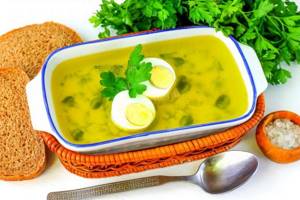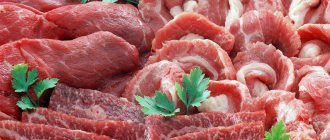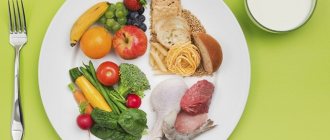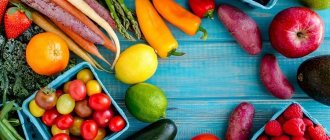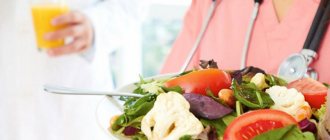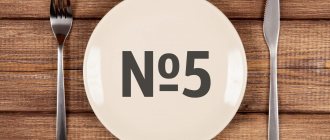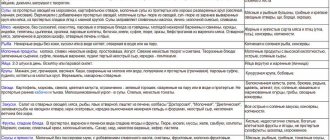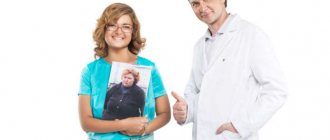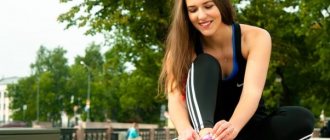11/27/2019 Article
- general characteristics
- Table "Do's and Don'ts"
- Menu for the week
The “11 table” diet is designed to help an organism weakened by illness cope with infectious and other diseases and quickly restore strength after illness.
Indications for use of the diet:
- mild exacerbation or completion of treatment for tuberculosis of the lungs, bones, joints and lymphatic system;
- for patients with exhaustion of the body after severe infectious diseases, serious injuries and operations;
- patients after lobar pneumonia and people suffering from anemia with low body weight.
The main goals of nutrition are to increase hemoglobin levels, strengthen the immune system, compensate for the deficiency of biologically active nutrients and vitamins, and also increase the body's resistance to infections.
The essence of the diet
The essence of the diet table is to enrich the body with the right amount of calories and nutrients.
The calorie content of this diet is increased, since the 11th table diet is aimed at increasing the content of animal proteins, vitamins, as well as minerals and elements such as iron, calcium and others in the patient’s body, and a moderate increase in the proportion of fats and carbohydrates.
Nutrition has been created for depletion of the body as a result of various diseases, injuries or operations. It is also recommended to use the diet to restore previous weight if it was lost due to pathologies.
We advise you to familiarize yourself with the rules of the hypocholesterol diet.
General rules
Diet Table No. 11 is prescribed for diseases that are accompanied by reduced nutrition and general exhaustion (primarily tuberculosis ). The purpose of its purpose is to fully meet the need for protein, fat, vitamins , carbohydrates, increase and strengthen the body's defenses during recovery, enhance reparative processes and increase resistance to infections.
In this regard, this is a physiologically complete diet of high calorie content, in which the content of proteins (at the expense of animals), carbohydrates and fats, minerals and vitamins is increased. Chemical and mechanical irritants of the stomach and bile ducts are limited in the diet. 11 dietary table differs in the main points:
- Protein content 120 g (most animal), fat 110 g, carbohydrates 350-500 g.
- Enriched with vitamins B , C and A , and minerals (vegetables, fruits, rosehip infusion), dietary fiber, calcium (large amounts of dairy products).
- Calorie content - 3000-3500 kcal.
- Rich in dishes that improve appetite.
- You can consume the usual amount of salt (up to 15 g per day). It is limited only in case of exudative tuberculosis (6–8 g) and in severe cases (3–5 g) with a simultaneous reduction in fluid intake. This diet promotes diuresis and reduces inflammation.
- If the patient has diabetes mellitus, simple carbohydrates (sugar, sweets, confectionery) are excluded.
- With iron deficiency anemia, the amount of protein consumed is further increased to 140 g, since it stimulates the absorption of iron from food and the amount of fat is reduced to 80–90 g, which, on the contrary, impede the absorption of iron.
- Lean meat and poultry are recommended.
- Dishes are prepared stewed, boiled and baked. They can be served pureed or not - it depends on the patient’s health condition.
- Liquid is allowed up to 1.5–2 liters.
- Fractional meals are provided 4–6 times a day.
Due to the fact that in patients with tuberculosis proteins break down faster than in healthy people, more protein foods are included in the diet. At the same time, proteins must be easily and completely digested, which is why it is envisaged to consume all kinds of dairy products. In second place is lean meat and less desirable sources of protein are prepared meats and fatty meats/poultry. The same applies to fats: vegetable oils, butter and fish oil are recommended, but cooking fats, pork and lamb are not recommended.
The diet must include calcium and phosphorus. These substances are found in cauliflower, milk, cottage cheese, butter, cheese, kefir, sour cream, tomatoes, and figs. It should be noted that in milk these elements are in the required proportions.
A few words about vitamins . Taking anti-tuberculosis drugs significantly affects the metabolism of vitamins, and vitamin deficiencies . Knowing which foods they predominate in, it is imperative to include them in the patient’s diet. A patient with tuberculosis should receive 2 times more vitamin C Sources of this vitamin are: lemons, oranges, kiwi, tangerines, strawberries, black currants, gooseberries, cabbage, bell peppers, onions. Vitamin B1 is involved in carbohydrate metabolism and must be supplied daily with food, since it is not synthesized in the body.
It is present in large quantities in rice, brewer's yeast, wheat, sprouted rye grains, legumes, beef, kidneys, liver, and egg yolk. Vitamin B2 is contained in sunflower, cottonseed, corn and soybean oils, as well as sprouted wheat grains. Sources of vitamin B3 are nuts, brewer's yeast, legumes, grains, mushrooms, liver, potatoes, beef, pork, herring, eggs. Vitamin B6 is also an important ingredient in the diet of patients, since it is involved in protein metabolism. Contained in liver, kidneys, meat, cod, corn, legumes.
vitamin PP : brown rice, yeast, wheat germ, salmon, liver, shrimp. Vitamin B12 stimulates protein synthesis and is very important for patients. Contained in fish, beef and pork liver. Vitamin A is rich in: animal liver, egg yolks and butter, and carotenes (provitamins of vitamin A ) are formed in carrots, lettuce, fresh and dried apricots. Sources of vitamin E are cereal sprouts, sunflower, cottonseed, peanut, corn, soybean oils, meat, eggs, and milk.
Thus, therapeutic nutrition for this disease is the main factor aimed at correcting metabolism.
General rules and principles
There are several general rules that the dietary table includes 11 . They must be followed throughout the course of treatment:
- The menu should be enriched with protein products, giving preference to dairy products.
- Increase the amount of carbohydrates in the menu - this can increase the calorie content of your diet.
- The average daily food intake is 3000 calories; if you are underweight, the energy value can be increased, and if you are overweight, you can reduce it.
- Eat small meals 5-6 times a day.
- It is better to cook dishes by steaming, boiling or baking in the oven.
- The basic principle of table 11 is the maximum addition of vitamins and minerals to the menu without overfeeding the patient.
- When creating a menu for a day or a week, it is important to take into account the characteristics of the patient, age and other diseases that may exist. For gastrointestinal diseases, the Pevzner 11 diet is not recommended by doctors.
To understand in detail the essence of nutrition, you need to know the basic energy value and chemical composition that is followed throughout the course of treatment.
Diet number 10 for cardiovascular diseases - we recommend reading.

Principles of therapeutic nutrition
In patients with serious infectious diseases (tuberculosis, lobar pneumonia), anemia, and also after extensive surgical interventions, body weight is often sharply reduced, and can reach critically low levels. In this state, it is very difficult for the body to fight and diseases often become chronic. The treatment method according to Pevzner is designed to quickly return the patient’s weight to normal, which will help him increase his immune resistance and prevent complications.
The diet of table No. 11 normalizes body weight and is also complete. It contains all vital nutrients, vitamins and minerals. The technique is based on the principle of a healthy diet, but with an increased daily calorie intake of food. The diet consists of 5 meals per day, the last of which should occur no later than 2 hours before bedtime.

Every day the patient should gain at least 3000 kcal, however, an increase in caloric intake of more than 3500 kcal is undesirable. The goal of the diet is to normalize weight, improve the functioning of all organs and systems of the body, but without exceeding the daily calorie intake, so that there is no reverse effect in the form of obesity. The required amount of kilocalories should be gained from protein foods and plant fiber. Animal and vegetable fats, slow carbohydrates remain within the requirements or increase slightly.
There are no requirements regarding chemical, thermal or mechanical sparing. Food can be prepared in any available way, fried is allowed, but the amount should be moderate - no more than once a day. Stewed and baked dishes, natural desserts, thick soups and borscht are best suited.
In order to compensate for vitamin deficiency, it is recommended to eat more seasonal plant foods: leafy vegetables, herbs, berries, fruits of local origin. It is important to choose only the most healthy products. For example, grapes in winter will not bring any benefit and will not fill the deficit, just like oranges in summer.
In case of tuberculosis, the menu must include dairy and fermented milk products. It is recommended to use natural milk from cows, goats, and sheep. Such foods are essential for replenishing calcium and healthy animal fats. In case of anemia, the amount of whole dairy products should be determined by a doctor, as it interferes with the absorption of iron.
Weight gain and recovery must occur correctly. The calorie content of the diet should not increase due to too fatty foods and semi-finished products. The following should be excluded from the menu:
- chips and crackers, snacks with flavoring additives;
- ready-made cakes, cream pies, chocolate with filling;
- artificial seasonings and spices;
- beef and lamb fat;
- low-quality sausages;
- cheap cheeses, processed cheeses;
- store-bought sauces and pastes (fish oil, mayonnaise, sandwich spreads);
- instant coffee, sweet soda, energy drinks, alcohol.
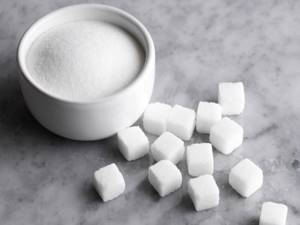
The amount of sugar and salt should be reduced. You can sweeten drinks and homemade desserts with honey or maple syrup. To add brightness to the taste of dishes without salt, you can use herbs and greens: basil, cilantro, marjoram, rosemary, etc. Spices made from natural ingredients are not prohibited: turmeric, cinnamon, cloves, nutmeg, paprika, etc.
It is advisable to structure your diet so that carbohydrates predominate at the beginning and middle of the day, and in the evening you should give preference to protein and plant foods. Fruits are suitable for breakfast and lunch, and for an afternoon snack it is better to eat fresh vegetables and drink fermented milk drinks.
It is imperative to introduce nuts to replenish essential amino acids, vegetable fats, and vitamins. Any available varieties are suitable: cashew, walnut, hazelnut, peanut. It is also recommended to use sesame, flax, and poppy seeds. They can be added to desserts, vegetable salads, and savory baked goods.
Salads should be seasoned with sour cream, vegetable oil, and lemon juice. Mayonnaise and other store-bought sauces should be avoided. It is advisable to eat a serving of liquid food every day: broths, fish soup, borscht, cream soups. They can be cooked in secondary meat, fish, and mushroom broth. It is not forbidden to add cereals and pasta to the first meal.
The exact menu and set of products for the patient should be clarified with the attending physician. The composition of the diet is influenced by the type and degree of the disease, the stage of recovery, and the presence of concomitant diseases. Arbitrary changes in diet can worsen the patient's situation.
Chemical composition and energy value
There are strict limits that must be adhered to:
- Proteins – 100-120 grams (half of them are of animal origin).
- Fats – 90-100 grams (at least 30 grams from plant products).
- Carbohydrates – 300-350 grams.
- Table salt – up to 15 grams.
- Free liquid – one and a half to two liters.
- The energy value of the diet is up to 3000 kcal.
- The weight of the daily diet is approximately 3 kg.
- Diet: eat small portions up to 6 times a day.
The daily calorie intake ranges from 2200 to 3000. Diet number 11 implies compliance with the drinking regime: up to 2 liters of liquid per day (including both water and other drinks). Salt is allowed 6-8 grams per day. It is prohibited to eat cold or hot foods. The optimal temperature will be 15-50 degrees.

Recommendations from nutritionists
For maximum effectiveness of the diet, nutritionists recommend adhering to the following rules:
- Drink at least 1.5 liters of fluid daily.
- You can drink juices in any quantity.
- It is allowed to consume fruits in any quantity.
- It is recommended to exclude citrus fruits.
- All food should be divided into 5 meals.
- Between doses, you can drink green tea, rosehip infusion, and still drinking water.
- It is recommended to avoid alcoholic beverages.
- To live an active lifestyle.
- One serving should not exceed 150 g.
- There should be equal time intervals between doses.
- The maximum daily caloric content of all servings is 3100 kcal.
Indications for use
Table 11 is prescribed for tuberculosis, but there are other indications. Among them are:
- Long-term course of serious illnesses and long recovery. For example, recovery from pneumonia.
- Severe exhaustion.
- Anemia (anemia).
- Leukemia.
- Reduced nutrition.
To understand how to eat properly, you will need to familiarize yourself with the list of allowed and prohibited foods in table 11. If the pancreas is not functioning properly, you can use the 5p diet for pancreatitis.
If a person has a history of chronic gastrointestinal diseases, diet table number 1 will help reduce the frequency of their exacerbation.
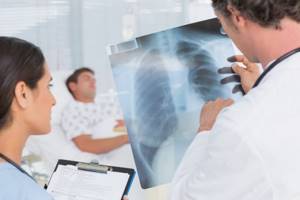
Menu - table
The menu for the week according to the Table 11 diet makes it easy to identify dishes and not have to look for recipes for a long time. An approximate diet is presented in the table; if desired, it can be adjusted, supplemented or removed from it:
| Day | Eating | Menu |
| Monday | Breakfast | Oatmeal with milk and raisins, mint tea |
| Lunch | Cottage cheese casserole with strawberries, a glass of yogurt | |
| Dinner | Borscht made from chicken broth, boiled rice with gravy and beef meatballs, a cup of apple compote | |
| Afternoon snack | 2 bananas, vegetable salad | |
| Dinner | Baked fish with peas and mashed potatoes, 250 ml milk | |
| Tuesday | Breakfast | Steam omelette with ham, poppy seed, coffee with milk |
| Lunch | A piece of cheese, a slice of grain bread, a tomato, tomato juice | |
| Dinner | Stewed cabbage (cauliflower) with rabbit and onion, rosehip infusion | |
| Afternoon snack | Biscuits, tea or juice | |
| Dinner | Homemade pizza in the oven, fish soup, juice | |
| Wednesday | Breakfast | Croissant with low-fat cream, milk |
| Lunch | Salad of grated carrots, beets and walnuts, dressed with vegetable oil | |
| Dinner | Baked goose with prunes, hibiscus, vegetable puree soup | |
| Afternoon snack | Cheese cheese, croutons, kefir | |
| Dinner | Stewed veal fillet with tomato and eggplant | |
| Thursday | Breakfast | 2 boiled eggs, buckwheat with milk, peach, tea |
| Lunch | Fruit salad with yogurt | |
| Dinner | Vermicelli with steam cutlet and tomato paste | |
| Afternoon snack | Bun with milk | |
| Dinner | Mushroom soup, boiled shrimp | |
| Friday | Breakfast | Sausage in dough, tea |
| Lunch | Pie with onion and egg | |
| Dinner | Shchi with meat and sour cream, herring and boiled potatoes, uzvar | |
| Afternoon snack | Okroshka, stuffed pepper | |
| Dinner | Meat goulash | |
| Saturday | Breakfast | Semolina with milk and berries |
| Lunch | Cookies with milk | |
| Dinner | Solyanka, macaroni and cheese, orange juice | |
| Afternoon snack | Jam sandwich, tea | |
| Dinner | Vinaigrette, noodles with cutlet, compote | |
| Sunday | Breakfast | Boiled corn, milk noodles, berry jelly |
| Lunch | Grape | |
| Dinner | Vegetable soup, sausage and steamed beans | |
| Afternoon snack | Bread with butter and sprats, baked in the oven, fruit drink | |
| Dinner | Meat chop, boiled beans, tea |
Diet for anemia table 11 allows you to quickly recover, restore strength and energy. To understand how you can adjust your diet, you will need to know the list of permitted foods.
Sample diet menu No. 11
First breakfast: omelet with meat, curd mousse with dried fruits, coffee. Second breakfast: milk buckwheat porridge, tea. Lunch: seafood salad, meat borscht, chop with mashed potatoes, apple mousse, juice. Afternoon snack: sweet bun, rosehip infusion. Dinner: potato casserole with mushrooms, compote.
Sources:
- Order of the Ministry of Health of the Russian Federation No. 330 “On measures to improve clinical nutrition in medical institutions of the Russian Federation” dated 05.08.2003
What can you do on a diet?
It is recommended to write or print a sample list of allowed ingredients when using the diet table. This will allow you to identify all the products that can be used during cooking:
- Bread allowed is rye, wheat and grain, which will contain cereals and other seeds.
- You can eat baked goods, various buns, cookies, pies, and biscuits.
- Recommended meats include chicken, rabbit, beef, turkey and goose. The meat product must not contain fat or skin if poultry is used.
- It is allowed to consume sausage products in small quantities, namely sausages, sausages, ham, sausage.
- The only offal you can eat is liver.
- Use low-fat fish; fish products such as caviar, balyk, and herring are also allowed.
- Almost all seafood products are healthy.
- Be sure to eat dairy and fermented milk products, eggs.
- Canned fish (sprats, sardines) and canned meat, pate are allowed.
- Any cereals (mainly oatmeal and buckwheat), vermicelli.
- Vegetable oils in their natural form.
- From legumes, include beans, peas and beans (grind into puree).
- Vegetables and fruits can be anything, but those with a lot of calories are better (avocado, dried cherries, dried pears, dried apricots, plums, potatoes, garlic, green peas), it is recommended to eat them raw.
- Berries.
- The only sweets are honey and jam.
- All types of non-alcoholic drinks are allowed, except those that contain gas and artificial components: dyes, preservatives, flavor enhancers, and so on.
- Eggs cooked in any way.
- Various soups and broths.
- A variety of sauces, spices in moderation.
You will notice that Diet 11 excludes almost nothing, which is what makes nutrition special. It is not difficult even for an unprepared person to follow such a diet.
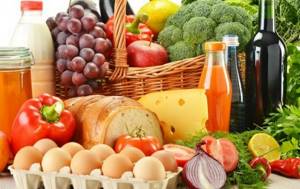
Authorized Products
The diet includes a variety of foods and dishes that stimulate appetite and are rich in extractive substances (broths, spices, but in moderation). Food should be tasty, have a pleasant smell and appetizing appearance (decorating dishes, adding fresh herbs to them). It is advisable that the main courses be preceded by appetizers in the form of vegetable salads with plenty of green onions, parsley, dill and the addition of vegetable oil.
Any bread according to the patient’s preferences is allowed: rye, wheat, grain. Baked goods and flour products are allowed. You can prepare any soups, excluding only fatty broths based on lamb and fatty pork. For first courses, you can offer (at the patient’s request) onions and garlic, which also stimulate the appetite.
Lean meat and chicken are served in any form: boiled, fried, baked and stewed. Moreover, fried and baked foods stimulate the appetite more. Liver and dishes made from it, as well as meat products, are also recommended. Fish can be of any variety, and its processing can also be varied. You can eat herring, canned food and fish roe as snacks. Sauces for meat and fish dishes and salad dressings should not be too spicy or fatty.
The side dish is prepared from any cereals, which need to be alternated in order to maximize the variety of the diet and enrich it with microelements. Cereals are used for milk porridges, casseroles and puddings. All pasta, any vegetables and legumes can be used as side dishes. Culinary processing allows you to prepare different dishes - stews, stewed vegetables, vegetable purees.
Any dairy products are allowed without restrictions: milk and milk drinks, kefir, ayran, kumiss, yogurt, cheeses, cottage cheese and dishes made from it. It depends on the patient's preferences. Fresh fruits can be consumed in their natural form and in the form of fruit salads, desserts, fruit drinks, juices, compotes or jelly. A decoction of rose hips, herbal decoctions with honey and lemon are useful. It is allowed to eat preserves, jams, marshmallows, marmalade, and marshmallows.
Table of permitted products
| Proteins, g | Fats, g | Carbohydrates, g | Calories, kcal | |
Vegetables and greens | ||||
| spicy vegetables | 2,8 | 0,5 | 5,3 | 36 |
| zucchini | 0,6 | 0,3 | 4,6 | 24 |
| cabbage | 1,8 | 0,1 | 4,7 | 27 |
| sauerkraut | 1,8 | 0,1 | 4,4 | 19 |
| bulb onions | 1,4 | 0,0 | 10,4 | 41 |
| carrot | 1,3 | 0,1 | 6,9 | 32 |
| canned cucumbers | 2,8 | 0,0 | 1,3 | 16 |
| pickles | 0,8 | 0,1 | 1,7 | 11 |
| beet | 1,5 | 0,1 | 8,8 | 40 |
| canned tomatoes | 1,1 | 0,1 | 3,5 | 20 |
| pumpkin | 1,3 | 0,3 | 7,7 | 28 |
| garlic | 6,5 | 0,5 | 29,9 | 143 |
Fruits | ||||
| apricots | 0,9 | 0,1 | 10,8 | 41 |
| oranges | 0,9 | 0,2 | 8,1 | 36 |
| watermelon | 0,6 | 0,1 | 5,8 | 25 |
| bananas | 1,5 | 0,2 | 21,8 | 95 |
| pears | 0,4 | 0,3 | 10,9 | 42 |
| melon | 0,6 | 0,3 | 7,4 | 33 |
| figs | 0,7 | 0,2 | 13,7 | 49 |
| lemons | 0,9 | 0,1 | 3,0 | 16 |
| tangerines | 0,8 | 0,2 | 7,5 | 33 |
| plums | 0,8 | 0,3 | 9,6 | 42 |
| apples | 0,4 | 0,4 | 9,8 | 47 |
Berries | ||||
| grape | 0,6 | 0,2 | 16,8 | 65 |
| strawberry | 0,8 | 0,4 | 7,5 | 41 |
| cranberry | 0,5 | 0,0 | 6,8 | 26 |
Mushrooms | ||||
| mushrooms | 3,5 | 2,0 | 2,5 | 30 |
| marinated mushrooms | 2,2 | 0,4 | 0,0 | 20 |
Nuts and dried fruits | ||||
| raisin | 2,9 | 0,6 | 66,0 | 264 |
| dried apricots | 5,2 | 0,3 | 51,0 | 215 |
| dried apricots | 5,0 | 0,4 | 50,6 | 213 |
| dates | 2,5 | 0,5 | 69,2 | 274 |
Cereals and porridges | ||||
| buckwheat (kernel) | 12,6 | 3,3 | 62,1 | 313 |
| cereals | 11,9 | 7,2 | 69,3 | 366 |
| corn grits | 8,3 | 1,2 | 75,0 | 337 |
| pearl barley | 9,3 | 1,1 | 73,7 | 320 |
| millet cereal | 11,5 | 3,3 | 69,3 | 348 |
| white rice | 6,7 | 0,7 | 78,9 | 344 |
Confectionery | ||||
| jam | 0,3 | 0,2 | 63,0 | 263 |
| jelly | 2,7 | 0,0 | 17,9 | 79 |
| marshmallows | 0,8 | 0,0 | 78,5 | 304 |
| candies | 4,3 | 19,8 | 67,5 | 453 |
| fruit and berry marmalade | 0,4 | 0,0 | 76,6 | 293 |
| paste | 0,5 | 0,0 | 80,8 | 310 |
| cookie | 7,5 | 11,8 | 74,9 | 417 |
| cake | 3,8 | 22,6 | 47,0 | 397 |
Chocolate | ||||
| chocolate | 5,4 | 35,3 | 56,5 | 544 |
Raw materials and seasonings | ||||
| honey | 0,8 | 0,0 | 81,5 | 329 |
| sugar | 0,0 | 0,0 | 99,7 | 398 |
Dairy | ||||
| milk | 3,2 | 3,6 | 4,8 | 64 |
| kefir | 3,4 | 2,0 | 4,7 | 51 |
| cream | 2,8 | 20,0 | 3,7 | 205 |
| sour cream | 2,8 | 20,0 | 3,2 | 206 |
| curdled milk | 2,9 | 2,5 | 4,1 | 53 |
| acidophilus | 2,8 | 3,2 | 3,8 | 57 |
| yogurt | 4,3 | 2,0 | 6,2 | 60 |
Cheeses and cottage cheese | ||||
| cottage cheese | 17,2 | 5,0 | 1,8 | 121 |
Meat products | ||||
| beef | 18,9 | 19,4 | 0,0 | 187 |
| veal | 19,7 | 1,2 | 0,0 | 90 |
| rabbit | 21,0 | 8,0 | 0,0 | 156 |
Bird | ||||
| chicken | 16,0 | 14,0 | 0,0 | 190 |
| turkey | 19,2 | 0,7 | 0,0 | 84 |
Eggs | ||||
| chicken eggs | 12,7 | 10,9 | 0,7 | 157 |
Fish and seafood | ||||
| black caviar | 28,0 | 9,7 | 0,0 | 203 |
| salmon caviar granular | 32,0 | 15,0 | 0,0 | 263 |
| punched pollock caviar | 28,4 | 1,9 | 0,0 | 131 |
| canned fish | 17,5 | 2,0 | 0,0 | 88 |
Oils and fats | ||||
| peasant unsalted butter | 1,0 | 72,5 | 1,4 | 662 |
| corn oil | 0,0 | 99,9 | 0,0 | 899 |
| olive oil | 0,0 | 99,8 | 0,0 | 898 |
| sunflower oil | 0,0 | 99,9 | 0,0 | 899 |
Non-alcoholic drinks | ||||
| mineral water | 0,0 | 0,0 | 0,0 | — |
| coffee | 0,2 | 0,0 | 0,3 | 2 |
| lingonberry juice | 0,1 | 0,0 | 10,7 | 41 |
| green tea | 0,0 | 0,0 | 0,0 | — |
| black tea | 20,0 | 5,1 | 6,9 | 152 |
Juices and compotes | ||||
| apricot juice | 0,9 | 0,1 | 9,0 | 38 |
| carrot juice | 1,1 | 0,1 | 6,4 | 28 |
| pumpkin juice | 0,0 | 0,0 | 9,0 | 38 |
| * data is per 100 g of product | ||||
What you can't do on a diet
The following must be excluded from the diet:
- Fatty meats or fish.
- Sauces, especially fatty, hot and spicy.
- Alcohol in any form.
- Very sweet foods, rich custards, chocolate and other sweets.
- Margarine.
The list of prohibited ingredients is small, but it must be strictly followed in order to get the effect of Diet 11.
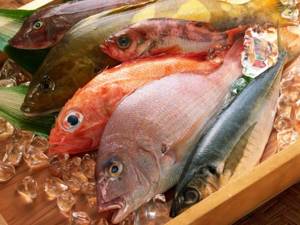
Advantages
After following the diet plan, patients experience a number of positive changes:
- gaining missing weight;
- strengthening the immune system;
- normalization of sleep;
- elimination of headaches and weakness;
- improved blood and urine test results;
- increasing efficiency and vitality.
Such nutrition can hardly be called a diet in the general sense of the word. After all, the patient is allowed almost all gastronomic pleasures, with the exception of those that are too fatty and spicy.
Dish recipes
To prepare delicious and healthy dishes, you can use the following recipes:
- Meat broth with eggs. To prepare, rinse 600 g of beef, add 2.5 liters of water and cook over medium heat. When the liquid boils, turn the heat to low and continue cooking the meat for 2 hours. During this time, peel and chop celery (200 g), 2 carrots, ginger (30 g), 1 onion. Vegetables are added after cooking the broth for half an hour. At this time, salt, pepper and bay leaf are added. Next, you need to pass the liquid through cheesecloth, chop the meat and add to the broth. Before serving, toss in the greens;
- Cauliflower soup. Remove skin and fat from 1 chicken leg, add water and cook for an hour over low heat. After 30 minutes of cooking, add the onion, chopped carrots, bay leaves and black pepper with salt. After another 10 minutes, add 2 chopped potatoes and after cooking, add 300 grams of cabbage. All that remains is to boil the soup until the cabbage is soft, after 10 minutes you can eat;
- Chops. Cut 600 grams of veal and beat off the pieces, add salt and pepper. Squeeze a clove of garlic into 2 tbsp. l. mayonnaise, add 3 tbsp. l. honey and 1 tbsp. l. mustard powder, mix the ingredients thoroughly and coat the meat with this mixture. Leave in the refrigerator for a day to marinate the veal. Fry in vegetable oil over low heat, avoid burning;
- Zrazy. Remove the crust from 100 grams of white bread, and pour the crumb with milk and water in equal parts. Grind 0.5 kg of beef in a meat grinder with 3 onions and add bread. Knead the minced meat thoroughly. Boil 2 eggs, chop them, chop the herbs and mix the ingredients, add salt and pepper. Make flat cakes from the minced meat, add an egg and herbs inside. Roll in breading and fry in oil.
There are many recipes that are suitable for diet table 11, so choosing a diet will not be difficult.
